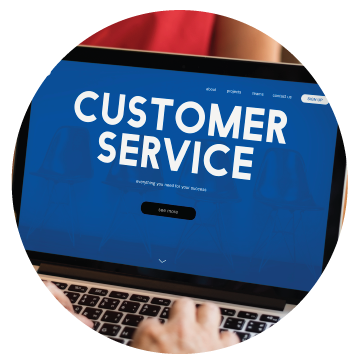In an ideal world, your customer service skills mean that there are no complaints. However, it’s important to be prepared to handle them if they should occur. Strong customer-oriented professionals have a positive attitude towards complaints. They see them as an opportunity for improvement and a chance to rebuild and strengthen the relationship with the customer. Research tells us that less than 5% of unhappy customers will make a complaint. Most of the 95% who will not complain, will stay away and will tell others of their problems. Apply these customer-orientated tips in dealing with complaints to create a positive outcome for all involved:
- Listen actively
Allow the customer to explain the problem as they see it. Ask open questions to ensure you understand their concerns and that the whole problem is on the table. Allow the customer to let off steam if necessary and don’t take this personally. They will feel better and you may pick up valuable clues as to the real issue. Repeat back what you have heard to check you have heard it correctly. This also demonstrates that you are taking the complaint seriously.
- Apologise and empathise
To the customer, you are the organisation. Apologise promptly and sincerely on its behalf. Even if you are not responsible for the problem, you are sorry that it has happened. Show that you recognise and understand the customer’s feelings. Use the customer’s name frequently to connect with them at a personal level and choose words that accurately reflect their mood. Don’t react emotionally, make excuses, blame the customer or others in the organisation, bureaucratic procedures or suppliers. Remain ‘Above the line’ at all times. The customer is not interested in your problems or excuses, just the solution. Recognise that through your attitude, you can affect the customer’s behaviour.
- Take responsibility
Use positive language, focusing on what you can do rather than what you can’t. Take care not to over-promise. Involve others if you need more authority to solve the complaint. If possible, offer several solutions and involve the customer in choosing the right solution for them. Stay calm, positive and in control of the situation. Remember, always take a complaint professionally, not personally.
- Thank the customer
Complaints are your opportunity to improve and to strengthen relationships. A sincere expression of appreciation to the customer will reassure them that you are taking the matter seriously, that you value their custom and that you welcome their feedback.
- Follow it through
Set the action plan in place immediately and check that it is completed as promised. If you have agreed to a deadline, stick to it. Keep your customer informed along the way. Share the experience with others in your team so that they can learn and develop their own skills in dealing with complaints. Use the complaint as a catalyst to suggest or set in place systems, policies or actions that will prevent the problem occurring again.
- Go the extra mile
Look for further opportunities to prove your interest in your customer by providing a little more than they expected, try to think outside of the box when coming to a solution for the customer. Follow up to check that they are happy with the resolution of the issue. Keep in touch through letters and emails to ensure the relationship continues. See complaints as an exciting opportunity to improve performance at all levels and to reduce complaints in the future.
Most organisations have a formal procedure for handling complaints. Ensure that you are aware of these procedures, or work with your team to prepare one if it does not exist. Whether you are the first point of contact, or become involved at a later stage, the most important ingredient to success is your attitude in handling the complaint. Bringing an ‘Above the line’ approach to the process, communicating with empathy and by applying the following steps, will ensure that a positive outcome can be achieved for all concerned.












